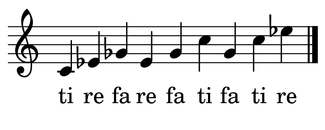In the last article we covered first and second inversions of major and minor triads. This week we’ll do some further exercises on these, and look at inversions of augmented and diminished triads.
Recap exercises
The following example simply presents a series of major and minor triads in second inversion, block form. After you hear the chord, stop the player and sing them back, first paying attention to the basic size of the intervals. On a second listening, try to figure out their quality:
Once you have spent some time with inversions of major and minor triads you can use the following example to test your skills. It consists of both types of triads, in all inversions, arpeggiated and in block form. After each triad sounds, stop the playback and take the time to sing it back. Sort out the inversion first, then the quality:
Inversions of Augmented and Diminished Triads
Before we leave inversions of triads, we have two triad qualities left to consider, augmented triads and diminished triads. We will start with augmented triads.
In root position the augmented triad is built by stacking two major thirds. The solfege we have been using is do mi si.
In first inversion, it is also two major thirds. Well theoretically, its a major third plus a diminished fourth. The thing is, however, the actual size of a diminished fourth in semitones is the same as a major third: four semitones. A diminished fourth out of a larger musical context will simply sound like a major third.
In second inversion, the augmented triad is a diminished fourth, plus a major third, but, we will also hear it as a major third plus a major third. So as far as the ear is concerned, there are no inversions of augmented triads. That was easy!
The diminished triad is actually fairly easy to distinguish from other triad types as it is the only one with a tritone in it. Remember that the tritone can be written as a diminished fifth or an augmented fourth. In root position, we can think of the diminished triad as two minor thirds with the tritone between the lowest and highest note. In first inversion it is a minor third, plus the tritone. In second inversion, the tritone is on the bottom with an added minor third:
We can use solfege to arpeggiate through the different positions of this chord as we did with earlier ones: fa ti re, ti re fa, re fa ti

Singing through the inversions of diminished triads
(click to enlarge)
We have now covered all the basic triad types in all positions. You may wish to spend some time with major and minor triads in first inversion before working with other types of chords and inversions.
Series Recap
Over this series of articles we have covered a tremendous amount of material! Training your relative pitch takes time and patience. My real goal has been to develop an approach to ear training through the exploration of different musical elements. The approach is simple: identify the structure of the musical element, learn to reproduce it with your voice, and learn to hear it in a larger context.
Remember you should train with these articles at your own pace – and save the sound clips to use as much as you like. If you have any questions, leave a comment below or come ask in the forums.










